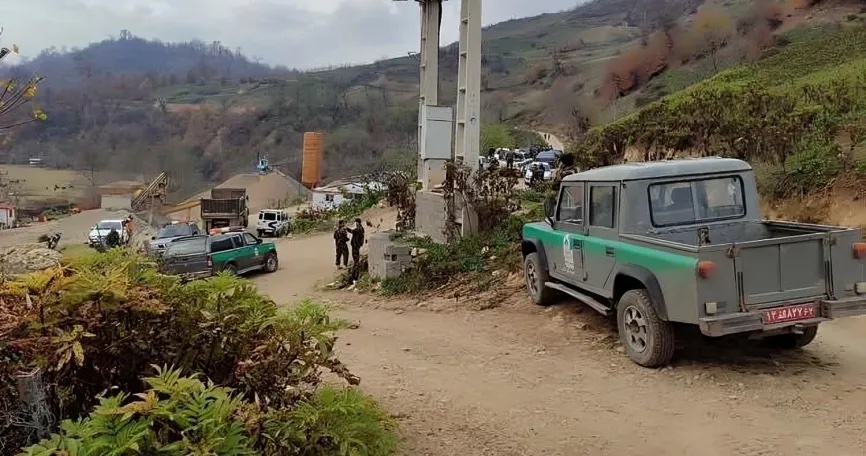Source: iranwire.com
Kian Sabeti

Baha’i villagers – a group that is part of both a proscribed religious minority, as well as Iran’s precarious agricultural class – are one of Iranian society’s most vulnerable communities.
The Islamic Republic has since its beginnings, in 1979, forced large numbers of rural Baha’is from their farming villages and into urban areas.
Displacing these groups has been part of a systematic policy to persecute Baha’is of all social and economic backgrounds and in every sphere of life. Baha’i villagers across provinces including West Azerbaijan, Mazandaran, Isfahan, Khorasan, Fars and Hamadan have all been forced to abandon their homes.
But Baha’i-populated villages continue to survive in some parts of the country. One such village, Ahmadabad in Mazandaran province, is the latest such village to face aggression from the authorities.
A report by the Baha’i International Community as well as other outlets detailed a late-2023 raid in which large portions of the village lands were fenced off from their Baha’i owners.
Ahmadabad is home to about 80 Baha’i families, with half residing in the village, and the remainder in surrounding areas.
Following the 1979 Islamic Revolution, Ahmadabad found itself cut from essential amenities, while neighboring villages received government assistance, including electricity, piped water, and roads.
The Baha’i residents, in the absence of government support, rallied together to establish the basic facilities necessary for a modest village life.
A Baha’i villager, whose name is being withheld to protect their identity, remembers the struggles they faced with the village school.
“The condition of the village school deteriorated. Fakhreddin Safaei, the sole Baha’i teacher, was dismissed,” the individual told IranWire.
“New teachers seemingly aimed to shutter the school. Consequently, families had no choice but to enroll their children in city schools. Ultimately, Faiz Ahmadabad School was shut down and demolished. Today, no remnants remain of Faiz Ahmedabad School, where numerous village children once received their education,” the villager said.
Stories such as this point to a persistent trend over the past 44 years, where regional authorities exerted pressure on the residents of Ahmadabad, attempting to force them out of the village.
On December 31, 2023, about 200 personnel from the ministries of Intelligence, Police, and Natural Resources, as well as several other Iranian officials and state-affiliated media figures, forcibly entered Ahmadabad village.
They blocked roads entering and leaving the village and confiscated the mobile phones to stop villagers from communicating and documenting the incident.
The following day, agents conducted a raid on the agricultural lands belonging to Baha’i villagers, seizing tens of hectares of fields and rice paddies.
A resident of the village described the incident, saying, “Early in the morning, around 200 personnel from various departments along with workers from nearby villages descended upon the village without any prior notice or warning.”
“They erected barbed wire, enclosing the agricultural lands. When questioned by locals about the reasons behind their actions, the agents not only remained silent but also responded with indifference.
“Unfortunately, the agents, oblivious to the fact that the fields were thriving with green wheat, used heavy equipment, destroying the flourishing crops.”
The Baha’i villager continued: “With a display of utmost pride and power, the agents began occupying our lands, where we have lived and farmed for 70 years, lands that have transformed into a settlement through the tireless efforts of us and our forefathers. For many in Ahmadabad, these lands represent their sole means of livelihood.”
The Department of Natural Resources in Mazandaran province is accused of spearheading the assault on Ahmadabad village and seizing numerous hectares of the residents’ agricultural land.
Under the pretext of undocumented ownership, the provincial natural resources authority claims that the villagers’ lands are not properly registered with the authorities.
Mehrdad Mahjoor, a native of Ahmadabad, refutes the Natural Resources Department’s assertion that the villagers lack ownership of their land. He contends that the department’s primary objective is to create hardship for the villagers – to compel them to abandon Ahmadabad.
Drawing a parallel with another nearby village Baha’i families were forced to vacate their homes, with only minimal compensation, Mahjoor suggests that Ahmadabad is now facing a similar fate.
But this time the authorities are using the lack of documentation for the land as an excuse to avoid providing any compensation at all.
Mahjoor told IranWire the history of Ahmadabad, highlighting that Ahmad Alavi, a livestock farmer, legally acquired the lands from Reza Shah’s government for livestock pastures.
The villagers later obtained ownership themselves after Iran’s land reforms. Mahjoor asked why the Natural Resources Department exclusively targets Ahmadabad when, in reality, all villages in Mazandaran lack formal land documents due to the historical land reform process.
He added that the term “Baha’i villager” is unfamiliar in the Islamic Republic’s culture, as it challenges the established image of Baha’i individuals as prosperous, urban, Westernized, and distinct from other Iranians.
The effort to “other” the Baha’is, crafted over 44 years, has led the government to employ various tactics to coerce Baha’is into leaving their rural homes and lands.
Mahjoor also stressed that, from a security standpoint, the government finds it more effective to monitor and control citizens in urban areas than in villages.
Leave a Reply